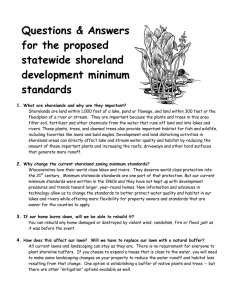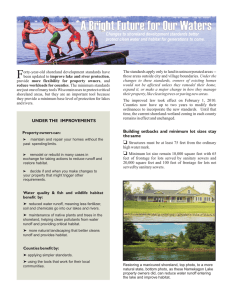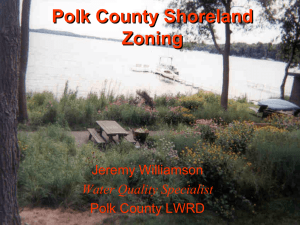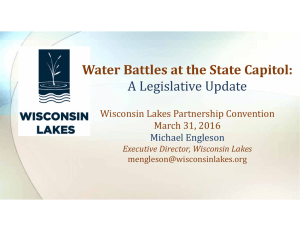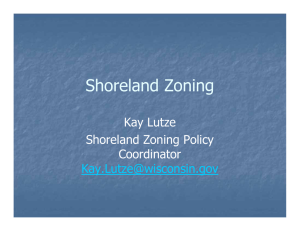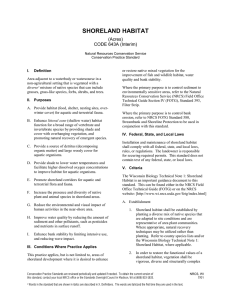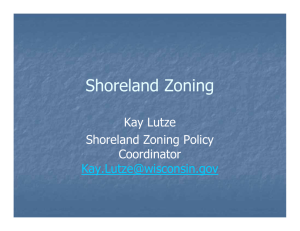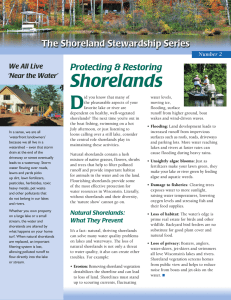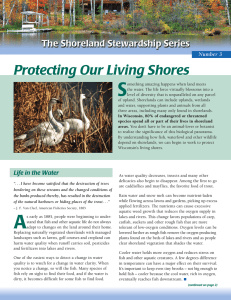Questions & Answers for the improved statewide shoreland development minimum
advertisement
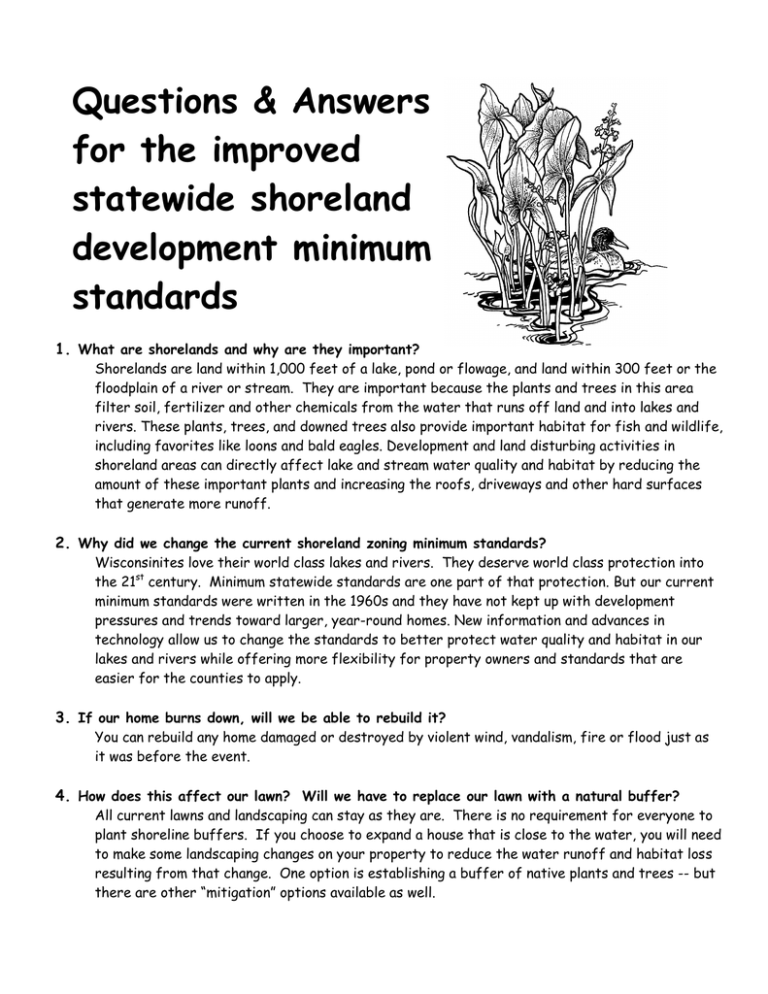
Questions & Answers for the improved statewide shoreland development minimum standards 1. What are shorelands and why are they important? Shorelands are land within 1,000 feet of a lake, pond or flowage, and land within 300 feet or the floodplain of a river or stream. They are important because the plants and trees in this area filter soil, fertilizer and other chemicals from the water that runs off land and into lakes and rivers. These plants, trees, and downed trees also provide important habitat for fish and wildlife, including favorites like loons and bald eagles. Development and land disturbing activities in shoreland areas can directly affect lake and stream water quality and habitat by reducing the amount of these important plants and increasing the roofs, driveways and other hard surfaces that generate more runoff. 2. Why did we change the current shoreland zoning minimum standards? Wisconsinites love their world class lakes and rivers. They deserve world class protection into the 21st century. Minimum statewide standards are one part of that protection. But our current minimum standards were written in the 1960s and they have not kept up with development pressures and trends toward larger, year-round homes. New information and advances in technology allow us to change the standards to better protect water quality and habitat in our lakes and rivers while offering more flexibility for property owners and standards that are easier for the counties to apply. 3. If our home burns down, will we be able to rebuild it? You can rebuild any home damaged or destroyed by violent wind, vandalism, fire or flood just as it was before the event. 4. How does this affect our lawn? Will we have to replace our lawn with a natural buffer? All current lawns and landscaping can stay as they are. There is no requirement for everyone to plant shoreline buffers. If you choose to expand a house that is close to the water, you will need to make some landscaping changes on your property to reduce the water runoff and habitat loss resulting from that change. One option is establishing a buffer of native plants and trees -- but there are other “mitigation” options available as well. 5. How will the changes affect what we can do with our home? All homes can be maintained and improved with internal remodeling, new windows, doors, siding, insulation, electrical, plumbing and roofs, without cost limits. More information about the proposed statewide minimum shoreland zoning standards are available at:http://dnr.wi.gov/org/water/wm/dsfm/shore/news.htm 6. We would like to expand our home. How will the changes affect us? If your home is located within 35 feet of the water, you could do internal remodeling including new windows, doors, siding, insulation, electrical, plumbing and roofs, but expansion or demolition and rebuilding would not be allowed. If your home is located between 35 and 75 feet from the water, you may expand as long as you do not exceed 30% of your lot in hard surfaces, and you have practices in place or implemented to reduce runoff and/or restore habitat, and to offset the increased runoff and other impacts of your project. Construction or expansion of buildings, driveways or other areas which prevent water from soaking into the ground is limited to 30% of the lot to reduce runoff and protect the water quality of lakes and streams. If your project does not meet the minimum standards, you can always apply for a variance. A variance is a way that projects may be approved when they are inconsistent with the zoning law and these should be few and far between. 7. We own a shoreland lot and would like to sell the lot or part of it. How will the changes affect us? There are no changes proposed for existing lots. 8. If my lot is substandard does that make my home substandard? No. A home does not become substandard or nonconforming because it is located on a substandard lot. A home is substandard if it predates and does not comply with current dimensional requirements such as the setback from the water. 9. What is mitigation and when is it required? In the past variances and other mechanisms were required to provide flexibility under zoning regulations. Off-setting measures or mitigation eliminates the need for many variances and provides flexibility in development in exchange for practices that reduce water runoff or restore habitat. The following activities trigger mitigation requirements: Expansion of structures at less than the required shoreline setback Development on substandard lots Development with more than 15% of hard surfaces Wisconsin Department of Natural Resources Bureau of Watershed Management 101 S. Webster Madison, WI 53703 (608) 261-6430
